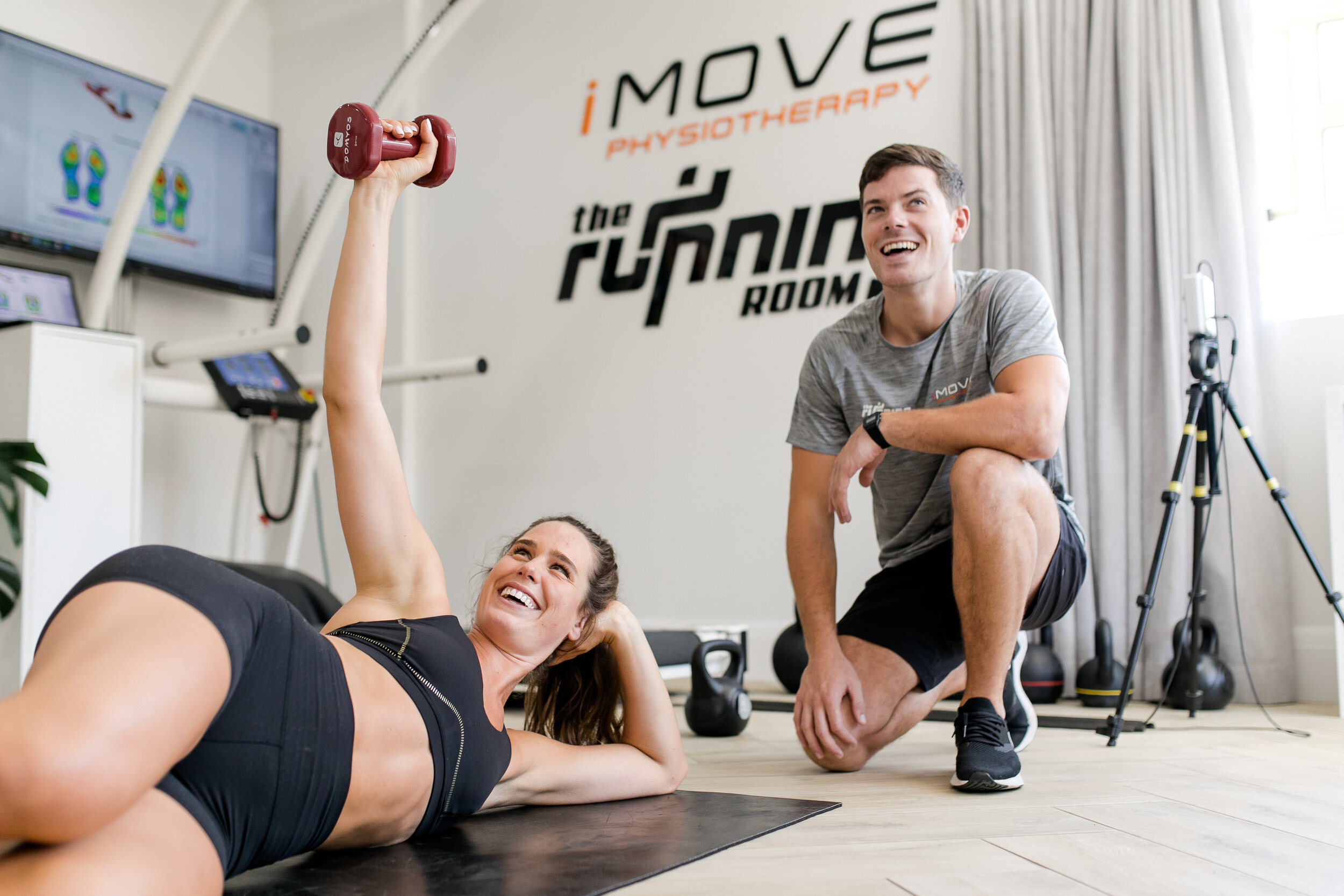
Patellofemoral Pain - Runner’s Knee
Patellofemoral Pain
Patellofemoral pain (PFP) is pain at the front of the knee at the kneecap (patella). Often categorized as Runners Knee along with Iliotibial Band Syndrome/Pain (ITBP). ITBP however is pain on the outside or lateral aspect of the knee and PFP behind or around the knee cap. Runner's knee is an umbrella term for both these conditions as they are commonly seen amongst the running population. Anyone can develop PFP and it is also commonly seen in cyclists, hikers, and everyday athletes.
Anatomy
The Patellofemoral joint sits at the front of the knee and involves the Femur, the Patella and the Fibula. The patella articulates with the surface of the femur when going through movements with the knee, so this occurs constantly when walking or running. The muscles and tendons attaching directly to the patella are the Quadriceps muscles and tendons and lower down we have the patella tendon that attaches the patella to the tibia.
Symptoms.
As previously stated PFP is identified as pain behind or around the knee and this is usually during weight-bearing activities when the knee is in a flexed position. These activities include walking up and down-stairs, walking up and downhill, running, lunging, squatting, kneeling or even sitting with a flexed knee for long periods.
Why do I have it?
PFP is multifactorial and there are many reasons why someone develops it. A lot of research has gone into biomechanical factors that could be contributing to the pain. In most cases that we see in the clinic, PFP onset is due to spikes in training load, strength deficits in the muscles at the hip and knee, poor movement control and running technique can also be playing a role in loading up the patellofemoral joint.
How long does it take?
Every condition is different but in most cases, we can settle symptoms in the first 2 to 3 weeks and get good results in 6 to 8 weeks by building good strength patterns. In some more complex cases, it can hang around for some time, up to 6 to 12 months and sometimes longer.
Treatment - long & short term management
In the short term, focus is on reducing pain and symptoms with load modification, taping of the patellofemoral joint and accurately assessing movement patterns and running biomechanics that may contribute to your knee pain. We combine manual therapy in the early stages of treatment with a specific strength and conditioning program with an emphasis on the knee and hip.
Longer-term treatment focus will shift to strengthening the quadriceps and gluteal muscles as we know these have a massive impact on patellofemoral joint function. If some movement patterns are found to be loading up certain structures in the knee we will focus on strengthening muscles to oppose these movements and to build tissue capacity. Additionally, some running cue’s may be appropriate to help decrease the load on the knee.
Follow us on socials where we bring value to the run community.

![[Mo]re Than A Run Sydney 2024 🥸
So good to see so many people out running this morning and showing up (despite the rain around CP) all in aid of men’s mental health. Over 200 runners bopping around Centennial, chatting and starting conversati](https://images.squarespace-cdn.com/content/v1/5a77ea35dc2b4a0bdb3fc4b9/1732941224838-WML7GNF86XR3TXA8ZQ5L/image-asset.jpeg)


